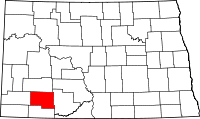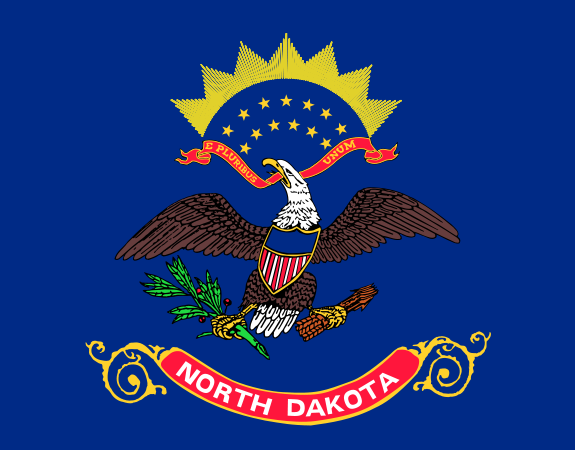Hettinger County was named by Tom Hettinger, the great-grandson of Erastus A. Williams, who was Speaker of the Dakota Territory House of Representatives the year Hettinger was established, in honor of his father-in-law Mathias Hettinger. The county was founded by the Dakota Territory Legislature in 1883, and was formally organized with its own county government on April 17, 1907, by a proclamation signed by Governor John Burke
In 1891, the North Dakota Legislature approved legislation to annex Hettinger County into neighboring Stark County, but the law was vetoed by Governor Eli C. D. Shortridge.
Annexation was attempted a second time in 1895, when the legislature passed legislation expanding the boundaries of Stark, Billings and Mercer Counties, subject to approval by the counties' voters. The vote was approved annexation went into effect November 3, 1896, and Hettinger County was eliminated However, Wilson L. Richards, a cattle rancher in one of the annexed counties, sued to overturn the annexation because he and other landowners were now subject to taxation by Stark County. The case went to the North Dakota Supreme Court, which ruled the law unconstitutional on May 18, 1899. The annexation remained in effect, however, due to a replacement law approved by the legislature March 9, 1899 in anticipation of the court's decision. The second second annexation law was overturned by the North Dakota Supreme Court in 1901 because the annexation was not referred to the voters of the affected counties as required by the North Dakota Constitution.
The Legislature passed a third annexation law in 1903, this time submitting it to the voters Stark County and the unorganized counties of Dunn and Hettinger for approval. The annexation was approved by 502 votes in Stark County and 65 votes in Hettinger County, but it failed by 1 vote in Dunn County. Stark County claimed the annexation vote valid, since the legislation required a majority of the aggregate votes cast. However, the North Dakota Constitution required a majority vote in each affected county subject to annexation, so the state of North Dakota sued stark county on the grounds that the enabling legislation was unconstitutional and that the "no" vote in Dunn County meant the annexation failed. The North Dakota Supreme Court ruled the 1903 law unconstitutional in 1905, which ended further attempts at annexation.
As an unorganized county, Hettinger remained "attached" to Stark County for judicial purposes until it was formally organized in 1907.
The cities of Hettinger County are Mott, Regent and New England with Mott being the County Seat. The un-incorporated towns are that of Bently.
Townships are Acme, Ashby, Baer, Beery, Black Butte, Brittian, Campbell, Cannon Ball, Castle Rock, Chilton, Clark, Farina, Havelock, Highland, Kennedy, Kern, Kunze, Madison, Merrill, Odessa, Rifle, St. Croix, Solon, Steiner, Strechlow, Tepee Butte, Wagendorf, and Walker.

Adjacent Counties
Stark County (north)
Grant County (east)
Adams County (south)
Slope County (west)
The information on Trails to
the Past © Copyright may be used in personal family history research, with source citation. The pages in entirety may not be duplicated for publication in any fashion without the permission of the owner. Commercial use of any material on this site is not permitted. Please respect the wishes of those who have contributed their time and efforts to make this free site possible.~Thank you!


